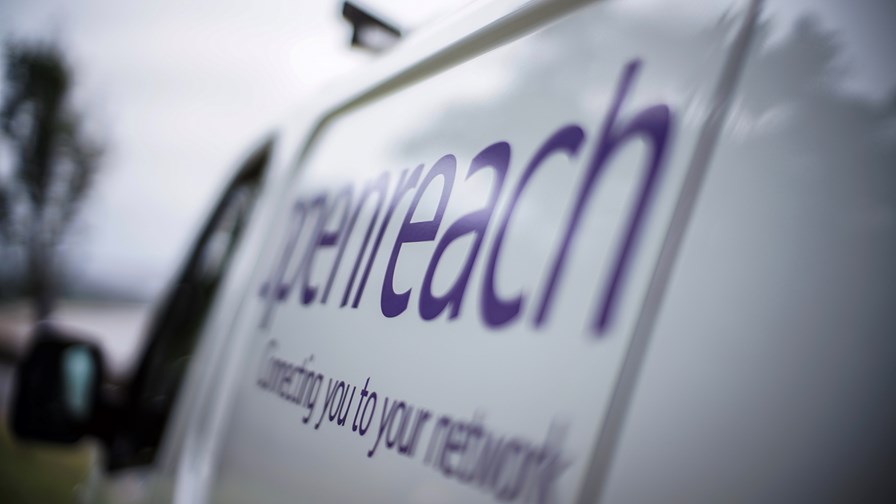
Picture courtesy of Openreach
- BT’s semi-autonomous fixed access network division to use ADTRAN gear as it rolls out fiber access network
- ADTRAN becomes third supplier of FTTx network gear, joining Nokia and Huawei
- Openreach needs to reduce its reliance on Huawei to meet UK government guidelines
As widely expected in the broadband industry, Openreach, the semi-autonomous fixed access network division of UK incumbent operator BT, has selected ADTRAN as its third supplier of optical line terminal (OLT) and optical network terminal (ONT) equipment for its fiber-to-the-home/building rollout plans, which have grown recently in scale and ambition.
Having steered clear of mass fiber access deployments for years, Openreach is now on a fast-track program to deploy FTTx networks around the UK. There are a number of factors that have jolted Openreach into action, but the competitive threat from the likes of CityFibre has been a key catalyst.
Openreach says it has now passed 2.6 million premises with fiber and aims to hit 4.5 million by the end of March 2021. Ultimately it is aiming to pass more than 20 million premises by mid- to late 2020s (that target is conditional), a target that will involve FTTx investments of an estimated £12 billion in total.
Openreach has, until now, been using technology from Huawei and Nokia, but began the process to source a third supplier in the middle of 2019. “We did a detailed assessment over six months and ADTRAN came up trumps. Now we’re keen to get their kit into the ground as soon as possible,” says Peter Bell, Network Technology Director at Openreach.
Bell says a number of vendors were assessed – another four or five in addition to ADTRAN. He wouldn’t identify them but it’s likely that names such as Calix, Altice Labs, Dasan Zhone Solutions and Iskratel will have been considered.
It’s less likely that Fiberhome and ZTE will have been in the mix due to the nervousness around the deployment of Chinese technology that currently exists thanks to the efforts of Trump & Co. That geopolitical situation led the UK government, in January this year, to impose restrictions on how extensively Huawei gear could be used in the UK’s 5G and FTTx networks: In a nutshell, UK network operators have three years to reach and then stick to certain thresholds, and for FTTx operators it means that Huawei gear can be used for a maximum of 35% of premises passed by any individual operator.
Openreach had begun its search for a third supplier before that restriction was imposed, but it likely anticipated some kind of ruling and having ADTRAN in the mix will now make it easier for targets to be met. Openreach won’t say what percentage of current homes passed are covered by Huawei gear but it’s widely recognized in the UK broadband sector that more Huawei than Nokia gear has been deployed so far. Bell says Openreach is very confident it will hit the threshold, while confirming also that there are no plans to sideline Huawei (it is not getting the order of the boot) and that Openreach will aim to have a “healthy mix… with a target of 20 million premises there is a nice slice of the pie for all the suppliers,” he notes.
Bell says Openreach still has some testing to do with ADTRAN’s gear to ensure it works OK with the various management, provisioning and ordering tools that it uses but that the tests won’t take too long.
For ADTRAN, this is a big deal in a number of ways. It is supplying its SDX OLT systems, its MOSAIC management software and the ONT units that are installed in the customers’ premises in areas where ADTRAN’s OLT gear is deployed. Openreach won’t put a value on the deal, but Bell says the US vendor will be getting “a considerable chunk of the pie.” Given the capex plans, rate of rollout, and restrictions on how much Huawei can be used, TelecomTV estimates this deal will be worth many tens of millions of dollars in revenues per year to the vendor once the supply chain is fully up and running.
Bell says ADTRAN’s SDX technology was selected because “it’s flexible in terms of its scalability… it can be used in small deployments of just a few thousand premises or in largest deployments of tens of thousands of premises. It scales well and enables ease of deployment,” notes the Openreach executive.
ADTRAN is on a good run currently, and its efforts to develop a software-defined fixed access system that gives greater flexibility to network operators is paying off in significant new deals with major carriers – only weeks ago the vendor announced a long-term supply agreement with Deutsche Telekom, with ADTRAN executives noting at the time that others were in the works.
- Ray Le Maistre, Editorial Director, TelecomTV
Related Content to TelecomTV:
Email Newsletters
Sign up to receive TelecomTV's top news and videos, plus exclusive subscriber-only content direct to your inbox.




